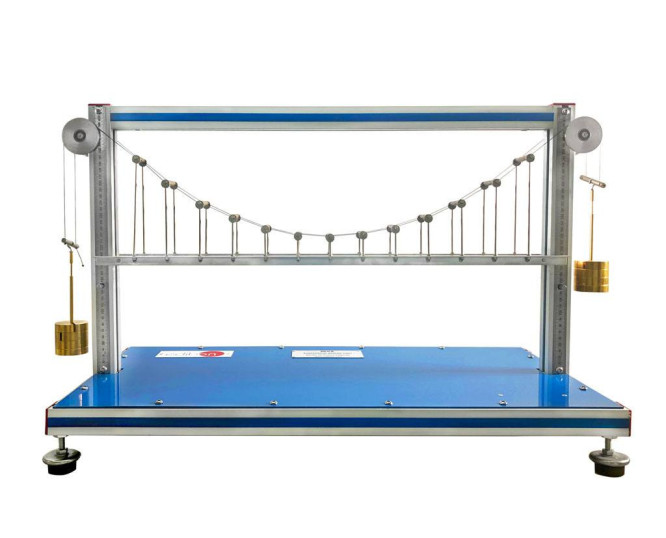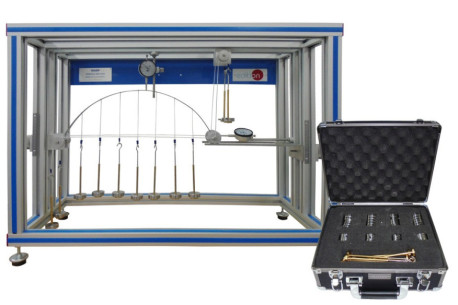MVS Gerät für eine Hängebrücke
INNOVATIVE SYSTEME
The Suspension Bridge Unit, "MVS", has been designed by EDIBON to allow experimental and theoretical comparison of cable tensions and study the behavior of suspension bridge structures under different load conditions.
Erweiterungen
Laboratorien
ÄHNLICHE NEUIGKEITEN
ALLGEMEINE BESCHREIBUNG
The Suspension Bridge Unit, "MVS", has been meticulously designed by EDIBON to explore the dynamics of stresses in a suspension bridge system. This unit simulates a suspension bridge using a deck and two parallel main cables, allowing students to study the tensions in the main cables.
The bridge deck is simulated by a lightweight alloy beam, which is supported by the two parallel main cables through bars that act as suspenders. These suspenders are distributed at constant and relatively short distances, supporting the loads applied to the beam. Loads are applied to the beam by placing masses at a series of load points, simulating a distributed load.
The tensions generated in the suspenders are transmitted to the main cables and then to the pulleys, where they are counteracted by appropriately placed masses. The suspended beam acts as the bridge deck, supported by the main cables through vertical suspenders. The main cables support the tension created by the loads, transmitting it to the pulleys for counteraction. Additionally, the system includes a set of weights and cords to apply and adjust the loads in the system.
The Suspension Bridge Unit, "MVS", ultimately facilitates the understanding of the principles of suspension bridges, allowing practical exercises to compare theoretical and experimental tensions in the cables and study how the bridge suspension responds to different load conditions. This unit comes with a set of weights to facilitate the performance of all experiments.
ÜBUNGEN UND GEFÜHRTE PRAKTIKEN
GEFÜHRTE PRAKTISCHE ÜBUNGEN IM HANDBUCH ENTHALTEN
- To demonstrate the characteristics of a bridge simple suspension.
- To observe the stability of a structure.
- To examine the relation between loads applied and suspension cable tension.
- To determine the experimental value of the tension in the supporting cables of a suspended beam subjected to a uniform load distribution.
- To compare the experimental and theoretical results.
ERGÄNZENDE AUSRÜSTUNG
Gerät für einen parabolischen Bogen
Gerät für einen dreigelenkigen Bogen
Gerät zur Untersuchung von Kräften in einer einfachen Stabstruktur (einfachen Fachwerken)
Gerät zur Untersuchung von Kräften in verschiedenen Aufbauten von ebenen Fachwerken
Gerät zur Untersuchung von Kräften in hyperstatischen Fachwerken
Gerät zur Untersuchung von Verformungen in Fachwerken
Gerät für einen dickwandigen Zylinder
Gerät für einen zweigelenkigen Bogen
Gerät für ein Portal
Gerät für Spannungshypothesen
Gerät zur Untersuchung von Stabilitätsproblemen
QUALITÄT

KUNDENDIENST

 Cookie-Präferenzen
Cookie-Präferenzen


















